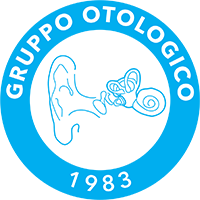Surgical technique and results of cable graft interpositioning of the facial nerve in lateral skull base surgeries: experience with 213 consecutive cases
Abstract
OBJECTIVE
The aim in this study was to review the technique and outcomes of cable graft interpositioning of the facial nerve (FN) in lateral skull base surgeries.
METHODS
The authors retrospectively evaluated data from patients who had undergone cable graft interpositioning after nerve sacrifice during skull base tumor removal between June 1987 and May 2015. All patients had undergone lateral skull base approaches to remove tumors at a quaternary referral center in Italy. Facial nerve function was evaluated before and after surgery using the House-Brackmann (HB) grading system.
RESULTS
Two hundred thirteen patients were eligible for study. The mean follow-up was 44.3 months. The most common pathology was vestibular schwannoma (83 cases [39%]), followed by FN tumor (67 cases [31%]). Facial nerve tumors had the highest incidence of nerve interruption (67 [66%] of 102 cases). Preoperative FN function was normal (HB Grade I) in 105 patients (49.3%) and mild (HB Grade II) in 19 (8.9%). At the last postoperative follow-up, 108 (50.7%) of the 213 patients had recovered to Grade III nerve function. Preoperative HB grading of the FN was found to have a significant effect on outcome (p = 0.002).
CONCLUSIONS
Cable graft interpositioning is a convenient and well-accepted procedure for immediate restoration of the FN. The study results, over a large number of patients, showed that the stitch-less fibrin glue–aided coaptation technique yields good results. The best possible postoperative result achieved was an HB Grade III. The chances of a good postoperative result increase when FN function is normal preoperatively. Slow-growing tumors of the cerebellopontine angle had a favorable outcome after grafting.
EDITORIAL
Outcomes of facial nerve repair using nerve grafts applied immediately following nerve discontinuity in skull base surgery.
Sudheesh Ramachandran, MCh, and Rajiv Midha, MD, MSc, FRCSC
Department of Clinical Neurosciences, Hotchkiss Brain Institute, and Cumming School of Medicine, University of Calgary, Alberta, Canada
RESPONSE
Sampath Chandra Prasad, Karthikeyan Balasubramanian, Jingchun He, and Mario Sanna
Thank you for your detailed editorial review. You have succinctly summarized the topic, and we appreciate your kind and complimentary comments regarding our paper. We are of the firm opinion that primary reconstruction using an interposition graft is the best solution for nerve discontinuity in skull base surgery and that this must be the first line of restoration. Other techniques such as hypo-glossal-facial or masseteric-facial nerve anastomosis can be done if the results of the initial procedure are not satisfactory after a period of 1 year. We prefer the sural nerve as graft material because, apart from the fact that the sural nerve is an ideal graft in terms of anatomical organization and available length, it also allows the primary surgeon to focus on dealing with the pathology in the primary operating field while an assistant harvests the graft. In our experience, a stitch-less fibrin glue coaptation in the cerebellopontine angle offers the same results as suturing at the site of anastomosis. Our recent publication on petrous bone cholesteatomas has shown that the results of facial nerve grafting are worse in this pathology than in other benign pathologies of the skull base, probably because of the infiltrative nature of the lesion and the fact that most patients have a preoperative facial nerve palsy due to the close association of the nerve to the lesion.
We acknowledge that our study would have been more complete if we had analyzed the results of the complications of facial nerve grafting. Although we did not have any recorded incidence of donor site morbidity, we did have patients with facial synkinesis and facial claudication after surgery. We will attempt to present a detailed study on this in our upcoming publication on the comparison of the results of interpositional nerve grafting with those of hypoglossal-facial and masseteric-facial nerve anastomosis.
Once again, we thank the authors for their editorial comments.


